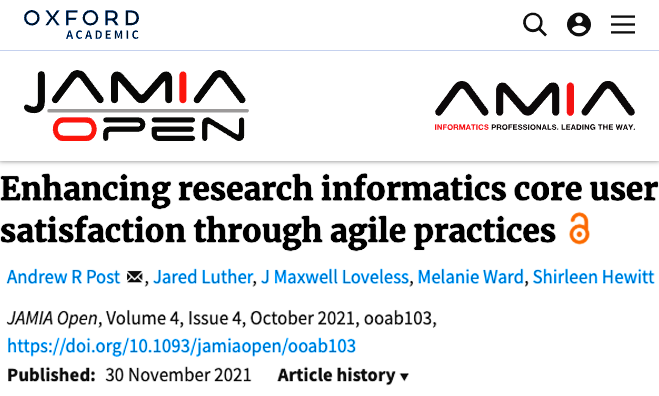- Welcome
- Introduction
- Publications and presentations
- Signing in
- System requirements
-
How To
- Logging into GNomEx
- Submitting an experiment request
- Submitting a microarray hybridization request
- Submitting a sample quality request
- Submitting a sequencing request
- Requesting that microarray hybridization or sequencing be performed on samples previously submitted to sample quality testing
- Adding lanes to a previously submitted sequencing request
- Registering an external experiment in GNomEx
- Finding and viewing a summary of an experiment
- Editing an experiment
- Downloading experiment results
- Linking the samples from an experiment to their BST sample
- Viewing analyses
- Downloading analyzed data files
- Viewing a description of the materials and the methods used during processing of a specific kind of experiment
- Performing a search for experiments and analyses meeting a specific type of criteria
- Submitting a work authorization
- How pricing and billing works in GNomEx
- Adding a new price criterion
- Creating a new price sheet
- Creating a new price category
- Modifying an existing price sheet
- Modifying an existing price category
- Modifying an existing charge item
- Preparing and sending out invoices for clients
- Generating general ledger interface data for automatically billing university accounts
- Window, Tab, and Field Descriptions
-
GNomEx Error Messages and Information Windows
- Are you sure you want to delete all the hybridizations?
- Are you sure you want to delete all of the samples?
- At least one non-empty file must be selected in order for download to proceed.
- Please enter all of the required fields for the hybridization.
- Please enter all required fields for the samples.
- Please enter at least one search criterion.
- Please select a price category.
- Please select a price sheet.
- Remove all hybs currently showing in the list?
- Remove all samples currently showing in the list?
- The number of samples to setup has changed. Do you want to clear out the existing samples?
- The request has not been saved. Are you sure you want to quit?
- The request is now assigned to project.
- The webpage you are viewing is trying to close the window.
- Unable to generate GL interface. Cannot find approved folder.
- You are no longer logged on. Please logon again.
- Your changes have not been saved. Are you sure you want to exit?
-
Working With the List of Samples Submitting for Microarray Hybridization
- Adding a Sample to the List of Samples You Will Be Submitting for Microarray Hybridization
- Adding a sample to the list of samples you will be submitting for microarray hybridization that is similar to another sample already in the list
- Deleting a sample from the list of samples you will be submitting for microarray hybridization
- Deleting all of the samples currently included in the list of samples you will be submitting for microarray hybridization
-
Working With the List of Hybridizations By Requests
- Adding a hybridization to the list of hybridizations you will be requesting
- Adding a hybridization to the list of hybridizations you will be requesting that is similar to another hybridization already in the list
- Deleting a hybridization from the list of hybridizations you will be requesting
- Deleting all of the hybridizations currently included in the list of hybridizations you will be requesting
- Editing a hybridization from the list of hybridizations you will be requesting
- Working with the list of hybridizations you will be requesting
- The hybs tab (submit microarray hybridization request window)
- The submit microarray hybridization request window
- Submitting a microarray hybridization request
- Microarray hybridization requests
-
Specialized Role Topics
- Uploading a sample sheet
- Setting/changing the prices of a charge item
- Setting/changing the experiment type(s) associated with a price sheet
- Setting/changing the criteria by which a charge item will be applied to billing for an experiment
- The sample view tab (new experiment module)
- The hyb setup tab (new experiment request module)
- The hyb view tab (new experiment request module)
- The new project window
- The edit project window
- Adding a new project while you are entering a microarray hybridization request
- Editing an existing project while entering a microarray hybridization request
- Adding a new sample characteristic for annotation while submitting a sample hybridization
- Editing an existing sample characteristic for annotation while submitting a sample hybridization
-
Guides
- User Guide
- Experiment orders
- The foundation of GNomEx
- Experiments at a glance
- Submitting a HiSeq or MiSeq experiment order
- ABI Capillary (Sanger) Sequencing
- Checking on experiment progress
- Copy and pasting into samples grid
- Posting outside experiment data
- iScan experiments
- Downloading and uploading your data
- The download files window
- Downloading large data sets
- Downloading chromatograms
- Fast data transfer from the command line
- Troubleshooting guide for downloading
- Launching FDT with Webstart
- Uploading your data
- Annotating your experiment
- Associating experiment files back to the samples
- Sample annotations
- Copy and paste for the samples grid
- Bulk sample sheet import
- Analysis and data tracks
- Create an analysis
- Data tracks
- Disk usage
- Configuring GNomEx
- Context-sensitive help
- Customize the billing account fields
- Dictionaries
- Seq lib protocols and barcode schemes
- Configuring HiSeq rapid mode sequencing options
- Developer Guide
- Installation Guide
- Configuring GNomEx for FDT
- Configuring GNomEx to use LDAP Authentication
- Compiling and Building
- The Database Schema
- GNomEx Open Source
- Developer Documents
- Illumina HiSeq Realtime Info — The Metrix Server
- FAQs
- Demo
Many aspects of GNomEx are configurable through dictionaries. To edit dictionary entries, click on the 'Configure…' link in the navigation bar and select the 'Add/Edit Dictionaries' link. The dictionary editor displays all of the different dictionaries in a tree. Click on the folder to see a detailed list of the dictionary entries. Click on an individual node in the tree to edit a particular entry. Use the + and — buttons to add or remove a particular dictionary. If the dictionary entry is used by any reference tables, foreign-key constraints in the database will prevent it from being deleted. Instead, you will need to uncheck the isActive flag on the dictionary entry.
The following sections describe key configuration points accomplished through dictionary editing.
System Wide Properties
There are a number of configurable properties that you need to set for your installation. Scroll in the left-hand tree to find the node called 'Admin — Property'. Review the entries and make sure you modify the following properties to match your environment.
General installation properties:
- production_server: The DNS name or IP address of the production app server.
- core_facility_name.
- contact_email_core_facility: The email address that appears on the about page is used as the sender email for auto-generated emails.
- contact_name_core_facility
- contact_phone_core_facility
These are all of the directories on the file system for storing GNomEx data.
- experiment_directory
- analyis_directory
- flowcell_directory
- lucene_index_directory
- lucene_experiment_index_directory: This is the directory that will contain the lucene experiment index.
- lucene_analysis_index_directory
- lucene_protocol_index_directory
- temp_directory
A number of properties are used to configure the instructions that appear on the 'Submit Request' window:
- qc_instruction
- workauth_instructions
- illumina_barcoding_note
Application Theme
For Illumina Seq experiment orders, the submitter will need to specify the kind of sequencing application performed (example: RNA Seq, ChIP Seq, etc.) Since there are many sequencing applications, the application theme is a way to group similar sequencing applications together.
Billing Period
These define each billing period in your system. The default install comes with a billing period for each month. If you intend on using the GNomEx Billing, please make sure that all of the billing periods for the upcoming year are specified.
Billing Category for Microarray Product
This is a way to categorize microarray slides for billing so that the prices can be defined for a certain category of microarray slide. These categories appear in a dropdown on the Slide detail window.
Billing Category for Microarray Analysis
Use this dictionary to categorize the charges for microarray analysis. For example, there may be a standard microarray analysis charge for expression arrays and a different charge for CGH arrays. These categories appear in a dropdown on the Slide detail window.
Core Facility
You can create multiple core facilities in GNomEx. Go to Manage Dictionaries (Menu item Config -> Manage Dictionaries). Click on the 'Admin — Core Facilities' folder. GNomEx ships with a default core facility. You can add other core facilities here. The next release will allow you to name these whatever you want, but for now, there are only 2 names that are supported:
- Microarray and Genomic Analysis
- DNA Sequencing
You have to use these names to get the base functionality to work for the supported workflows.
- Microarray and Illumina workflows are supported under the 'Microarray and Genomic Analysis' core facility.
- Capillary Sequencings, Fragment analysis, Mitochondrial DLoop Sequencing, and Cherry Picking are supported under the 'DNA Sequencing' core facility.
- Coming in the next few months is support for the iScan and Ion Torrent workflows. Soon to follow will be support for the Sequenom MassArray platform.
Illumina Oligo Barcode
- Illumina Barcode Scheme: Define a group of barcode tags (of same length) to be used to multiplex runs.
- Illumina Barcode: Define each unique barcode (sequence) tag.
- Illumina Barcode Scheme Allowed Platforms: Define the experiment platforms that can utilize the barcode scheme.
Instrument
Define your different HiSeq and MiSeq Illumina instruments here. When a flowcell is created in GNomEx, a dropdown will list these instruments so that GNomEx can keep track what instrument the sample was sequenced on.
Sample Bioanalyzer Chip Type
If your site uses Bioanalyzer assays for Sample Quality, define the different chips offered.
Sample Concentration Unit
Define the different unit of measures for sample concentration here.
Sample Source
Deprecated. Please configure a sample annotation instead.
Submission Instructions
If you have a instruction pages that should print with the order form, use this dictionary to define what document should be attached to certain kinds of experiments. For example, you may want to have instructions for Illumina HiSeq experiments that are different than the submission instructions for Microarray experiments. You will need to create HTML documents that are places in the doc directory of the gnomex web application that correspond to the documents defined here.




